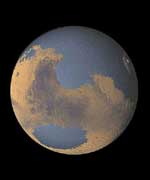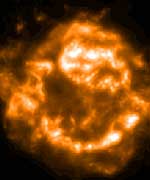The International Space Station?s Expedition 10 crewmembers completed the first 50 days of their six-month mission this week, highlighted by a short flight in their Soyuz spacecraft.
To put the Station in the preferred configuration for two spacewalks out of the Russian Pirs Docking Compartment next year, Commander Leroy Chiao and Flight Engineer Salizhan Sharipov moved their ISS Soyuz 9 spacecraft Monday from Pirs to the Earth-facing docking port on the Zarya module during a 21-minute flight. The work to prepare the Station for possible autonomous operations, and then to reconfigure it for normal operations, stretched from Sunday afternoon until early Monday afternoon.
After getting off duty time Tuesday and Wednesday to rest, Chiao and Sharipov spent the rest of the week on routine maintenance tasks, such as the regeneration of filter cartridges in the Elektron oxygen generation system. They also completed audits of on board computer hardware and food as mission managers finalize the appropriate manifest for the next Russian cargo craft. The ISS Progress 16 spacecraft will ferry food, fuel, clothing and other supplies to the Station. The audit of food supplies aboard the Station confirmed that sufficient food remains for the crew until arrival of the next supply craft. Managers have adjusted the amount of food to be carried on the Progress, however, to ensure onboard stores are fully replenished.
Included in the cargo are three laptop computers that will return the Station Support Computer network to full functionality. This week, one of the computers that crewmembers use to access messages while working at the Zvezda module?s command post, failed. Another computer is being temporarily moved from Sharipov?s sleep station to the command post until the new laptops are delivered.
The new Progress cargo ship is targeted for launch from the Baikonur Cosmodrome in Kazakhstan at 4:19 p.m. CST on Dec. 23 (2219 GMT), and is due to arrive at the Station just after 6 p.m. CST on Christmas night (0005 GMT on Dec. 26).
Chiao and Sharipov will spend time over the next three weeks loading unneeded materials from throughout the Station into the Progress currently mated to the Zvezda module. It will be undocked and deorbited on Dec. 22.
On Tuesday, Sharipov located a missing component of an American spacesuit?s cooling pump. The shim, a washer-shaped piece of metal that is custom fit for each spacesuit, was missing last month at a time when Chiao was repairing the spacesuit?s pump assembly. The shim was planned to be installed in a portion of the spacesuit in a pure oxygen environment to ensure it is in pristine condition and free of contamination. Spacewalk specialists at the Johnson Space Center decided further spacesuit repair attempts will utilize a new shim to be delivered on the upcoming Progress to avoid any potential contamination from the shim that was temporarily lost.
Information on the crew’s activities aboard the Space Station, future launch dates, as well as Station sighting opportunities from anywhere on the Earth, is available on the Internet at:
Details on Station science operations can be found on an Internet site administered by the Payload Operations Center at NASA’s Marshall Space Flight Center in Huntsville, Ala., at:
Original Source: NASA Status Report



